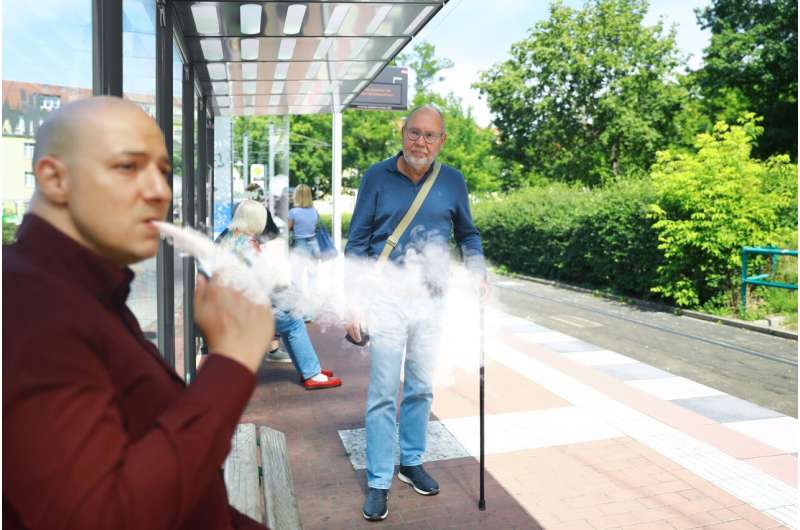Study finds vaping renders frontline immune cells unable to move to meet threats

Inhaling vapor from an e-cigarette may be stopping frontline immune cells from working typically, as a new study shows that even moderate smoke exposure suppresses cell activity.
The findings are published in the Journal of Allergy and Clinical Immunology and suggest that inhaling e-cigarette smoke could be damaging neutrophils, the first line of defense in the human immune system. The findings are important as previous research has shown that damage caused to neutrophil by cigarette smoking can lead to long-term lung damage.
Researchers from the University of Birmingham took blood samples from healthy donors who had never smoked or vaped. The team then exposed neutrophils taken from the blood to 40 puffs of unflavored vape, which previous studies have shown is a low daily exposure; with half of the samples were exposed to nicotine-containing vapor while the rest to nicotine-free alternatives.
Results of the tests showed that in both the nicotine and non-nicotine groups, the neutrophils remained alive but were stuck in place, rendering them incapable of effectively tackling threats to the body.
Dr. Aaron Scott, associate professor in respiratory science at the University of Birmingham and lead author of the study said, “We found that after short, low-level exposure to e-cigarette vapor, the cells remain alive but can no longer move as effectively and are unable to carry out their normal protective functions. Interestingly, vapor from e-liquids which did not contain nicotine also had the same negative effects as vapor from e-liquids which did contain nicotine.
“E-cigarettes are a proven, lower harm, tool to help smokers quit smoking but our data adds to current evidence that e-cigarettes are not harmless and highlights the need for to fund longer-term studies in vapers.”
Further experiments with neutrophils exposed to e-cigarette vapor suggest a build-up of a microfilament within the cells which are unable to re-arrange themselves properly is driving the suppression of the cells normal function.
Actin is usually found as small filaments within cells and rearrange themselves into a network to help a cell change its shape. This function is used by neutrophils so that they can move towards and surround threats to destroy them.
The team observed that there were high concentrations of the filament F-actin within the neutrophils that had been exposed to e-cigarette vapor, whether containing nicotine or not. The accumulation of the F-actin resulted in the immune cells being less able to move and function typically.
David Thickett, professor in respiratory medicine at the University of Birmingham, Clinical Lead for the University Hospitals Birmingham (UHB), NHS Foundation Trust, and a co-author of the paper said, “Neutrophils normally protect the lungs by moving from the blood to the site of possible harm before using a number of protective functions to protect the lung. The observed impact that e-cigarette vapor had on their mobility is therefore of significant concern, and if this were to happen in the body would make those who regularly use e-cigarettes at greater risk of respiratory diseases.”
Professor Liz Sapey, director of the Institute of Inflammation and Aging at the University of Birmingham and honorary acute medicine and respiratory consultant physician at UHB, and a co-author of the paper said, “Smoking has a well-documented impact on neutrophils, and this study further shows the impact that e-cigarettes still have on the immune system. Neutrophils are heavily implicated in aging and chronic obstructive disease and their relationship with tissue damage, and the impact of vaping in suppressing neutrophil activity regardless of nicotine could have long term implications for health.”
More information:
Alice E. Jasper et al, E-cigarette vapour renders neutrophils dysfunctional due to filamentous actin accumulation, Journal of Allergy and Clinical Immunology (2023). DOI: 10.1016/j.jaci.2023.08.025
Journal information:
Journal of Allergy and Clinical Immunology
Source: Read Full Article
